Q
What is the Mainentance Cost of Proton Persona? Get Idea Here
As a popular sedan from a local Malaysian brand, the Proton Persona has relatively affordable maintenance costs, making it suitable for car owners on a tight budget. According to the official recommended maintenance schedule, a basic maintenance service is required every six months or 10,000 kilometers, which costs approximately RM200 to RM300. This includes engine oil, an oil filter, and basic inspections. For major maintenance, such as changing the transmission fluid and brake fluid at 40,000 kilometers, the cost is around RM600 to RM800. The exact price may vary slightly depending on the service center or additional services.
It's worth noting that Proton has an ample supply of parts and transparent pricing, which helps to keep long - term maintenance costs in check. Moreover, regular maintenance not only extends the vehicle's lifespan but also maintains its good condition, thereby increasing its resale value. For car owners looking to save more, they can consider purchasing Proton's maintenance packages or using original - certified replacement parts. At the same time, it is recommended that car owners strictly follow the maintenance manual to avoid higher repair costs caused by delayed maintenance.
Overall, the Persona's maintenance cost is an economical choice among B - class sedans, striking a good balance between daily usage needs and long - term ownership costs.
Special Disclaimer: This content is published by users and does not represent the views or position of PCauto.
Related Q&A
Q
What Segment is Proton Persona?
The Proton Persona belongs to the B-Segment category. B-Segment usually includes some compact-sized family sedans suitable for daily urban commuting. These types of vehicles generally have a moderate length and width, which makes it easy for them to maneuver through congested city traffic and park relatively easily. The Proton Persona has a length of 4366mm, a width of 1722mm, and a wheelbase of 2555mm. Such dimensional design conforms to the characteristics of B-Segment models. In Malaysia, there is a large market demand for B-Segment vehicles because they are economical and practical, meeting the travel needs of most families. Relying on the features of this segment of models, the Proton Persona holds a certain share in the Malaysian family sedan market, offering consumers an affordable and practical travel option.
Q
What is the Reslae Value of Proton Persona?
As a best - selling model of a Malaysian local brand, the Proton Persona shows a stable used - car resale value in the B - class sedan market. Depending on the vehicle age, condition, and configuration, the residual value of a 3 - year - old Proton Persona usually stays around 50% - 60%, while that of a 5 - year - old one is about 40%. This is closely related to its reliable powertrain (such as the 1.6L CamPro engine paired with a CVT gearbox), low maintenance costs, and extensive original - factory service network.
The key factors affecting its resale value include regular original - factory maintenance records, accident - free vehicle conditions, and popular configurations (such as HLA hill - start assist and a 7 - inch touchscreen). Moreover, the high market share also ensures good liquidity.
It's worth noting that Proton models have always been known for their cost - effectiveness. The demand for the Persona in the used - car market is mainly focused on the post - 2019 facelift versions, as they have optimized sound insulation and suspension comfort.
Q
How Many CC is Proton Persona?
The Proton Persona has a displacement of 1597 cc. CC (Cubic Centimeter) is equivalent to a cubic centimeter and is the same as a milliliter (mL). In the automotive field, it is used to represent the engine's displacement. All models of the Proton Persona are equipped with a 1.6 - liter displacement engine. The intake form is natural aspiration (NA), and the cylinder arrangement is an in - line 4 - cylinder. The engine's maximum horsepower is 109 PS, the maximum power is 80 kW, the maximum power speed is 5750 rpm, the maximum torque is 150 N·m, and the maximum torque speed is 4000 rpm. Such a power configuration can meet the needs of daily urban commuting and general road driving. Different versions of the models vary in terms of configuration, comfort, etc., but the core engine displacement remains the same.
Q
What is the Engine in Proton Persona?
Currently, the Proton Persona is equipped with a 1.6-liter naturally aspirated four-cylinder gasoline engine, codenamed CamPro IAFM+. This engine is independently developed by Proton. It has a maximum output power of 107 horsepower (about 80 kilowatts) and a torque of 150 Newton-meters. It is paired with either a 5-speed manual transmission or a CVT continuously variable transmission. The overall performance is smooth, and its fuel economy is suitable for daily driving.
The CamPro series of engines is one of Proton's signature technologies. The IAFM+ (Intelligent Air-Fuel Module with Variable Length Intake Manifold) technology enhances the low-speed torque performance by optimizing the intake efficiency, which meets the driving needs of the multi-urban road conditions in Malaysia. It's worth mentioning that since Proton collaborated with Geely in recent years, some new models have started to adopt turbocharging technology. However, as an economy car, the Persona still continues with the mature and stable naturally aspirated configuration. This setup is more attractive to local consumers in terms of maintenance cost and reliability.
If you have higher requirements for power, you can pay attention to Proton's models equipped with the 1.5TGDI turbocharged engine. Nevertheless, the Persona is more positioned towards practicality and cost-effectiveness, making it suitable for family users who focus on daily commuting.
Q
What is the Gearbox Type of Proton Persona?
The Proton Persona comes with two types of transmissions: MT (Manual Transmission) and CVT (Continuously Variable Transmission). Some models of the 2019 version are equipped with the MT gearbox. It has a simple structure, can withstand large instantaneous torque, and delivers outstanding power performance. Most other models from different years are mainly fitted with the CVT transmission, which performs well in terms of smoothness and fuel - efficiency. During driving, gear shifts are smooth, and it can effectively reduce fuel consumption, providing drivers with a comfortable driving experience. Different transmission types meet the diverse needs of consumers. The MT is suitable for drivers who enjoy the fun of manual control, while the CVT is more popular among users who pursue a smooth driving feeling.
Q
What is the PCD Size of Proton Persona?
The PCD (Pitch Circle Diameter) of the Proton Persona is 114.3 millimeters. This is the diameter of the circle formed by the distribution of the wheel hub bolt holes. It usually comes with 5 bolt holes (i.e., 5x114.3). This specification is compatible with many mainstream car models, which makes it convenient for car owners to replace the wheels or upgrade the tires in the later stage. PCD is one of the key parameters for wheel installation. If the PCD doesn't match when replacing the wheels, it may lead to unstable installation or potential safety hazards during driving. Therefore, it is recommended that car owners confirm the original factory data or consult professional technicians before modification.
In addition, the wheel offset of the Proton Persona is usually between 35 and 45 millimeters, and the center bore (CB) is about 56.1 millimeters. These data together ensure the correct fit between the wheels and the suspension system. For Malaysian car owners, there are a wide variety of wheel options available in the local aftermarket. However, they need to pay attention to choosing products that are certified by JWL or VIA to ensure the quality. At the same time, they also need to comply with the regulations of JPJ when making modifications. For example, the outward expansion of the wheels should not exceed the body width, and the change in tire size should be within 15% of the original factory specifications to avoid affecting the annual inspection or insurance benefits.
Q
Does Proton Persona Have Apple Carplay?
Some current models of the Proton Persona do come equipped with Apple CarPlay. This availability specifically depends on the model year and configuration. For example, the higher - end versions (such as the Premium edition) from 2020 onwards typically feature a 7 - inch touchscreen infotainment system that is compatible with both Apple CarPlay and Android Auto. This allows users to seamlessly connect their iPhones to the vehicle's screen and use functions like navigation, music, or make calls.
For owners of earlier versions of the Persona, if the function was not pre - installed at the factory, compatibility can be achieved by upgrading the head unit or installing a third - party module. However, it is recommended to consult Proton's authorized service center first to ensure system stability.
Moreover, the practicality of Apple CarPlay is not limited to navigation and entertainment. It can also enhance driving safety through Siri voice control, which highly aligns with the needs of Malaysian users who value high cost - effectiveness and practicality. Other models in the same class, such as the Perodua Bezza and Honda City, are also gradually popularizing such smart connectivity configurations, reflecting the local market's emphasis on technological experiences. It is advisable to check the latest configuration list on Proton's official website or at physical stores before purchasing a car and to experience the smoothness of the actual vehicle operation.
Q
What is the Tyre Brand of Proton Persona?
As a popular model of Malaysian domestic cars, the original - equipped tire brands of the Proton Persona vary according to different years and configuration versions. Common original - equipped tire brands include well - known international brands such as Goodyear, Continental, and Silverstone. For example, some models were once equipped with the Goodyear Assurance or Continental ComfortContact series. These tires are famous for their wear resistance and performance on wet roads, which meet the needs of local road conditions.
As the only part of the vehicle that contacts the ground, when choosing tires, factors such as tread design, rubber formula, and size matching need to be comprehensively considered. It is recommended that car owners regularly check tire pressure and wear conditions to ensure driving safety. If replacement is needed, they can refer to the original factory specifications or consult professional technicians. Meanwhile, given the rainy climate in Malaysia, it is advisable to prioritize tire models with excellent drainage performance, such as those with deepened groove designs. These details can significantly improve driving stability during the rainy season.
Q
Is Proton Persona a Good Car? Learn the Pros and Cons Here
The Proton Persona has its advantages and disadvantages. In terms of advantages, it comes with an affordable price. For example, the 2023 Proton Persona 1.6 Standard CVT is priced at RM 47,800, making it suitable for consumers with a limited budget. The vehicle comes with a 5 - year or 150,000 - kilometer warranty, providing long - term quality assurance. It is equipped with a relatively rich set of safety features. ABS and vehicle stability control are standard across the board, and some versions come with six airbags. In terms of interior space, with a wheelbase of 2,555 mm, the rear - seat space can generally meet daily needs. The 510 - liter trunk volume can satisfy the loading requirements for trips.
However, there are also some drawbacks. Some versions are equipped with drum rear brakes, which are inferior to disc brakes in terms of braking performance and heat dissipation. The manual seat adjustment in some models is not very user - friendly for those who prefer the convenience of electric adjustment. Its fuel consumption is average. For instance, the official combined fuel consumption of the 2023 Proton Persona 1.6 Premium CVT reaches 8.1 L/100 km. Overall, if you have a limited budget, value safety features and space, and don't particularly pursue high performance and low fuel consumption, the Proton Persona is a viable option to consider.
Q
What is the Width of Proton Persona?
The Proton Persona has a width of 1,722 mm. The vehicle width is a crucial measurement as it significantly impacts the lateral seating space inside the car. When the width is sufficient, passengers will feel more spacious and comfortable during the ride. This is especially true for rear - seat passengers, as an appropriate width can reduce the sense of crowding.
Meanwhile, the vehicle width also affects the car's manoeuvrability. A narrower body is relatively more flexible and convenient when making turns, parking, and performing other operations. On the other hand, although a wider body has an advantage in terms of seating space, it may face certain challenges when driving and parking in narrow road conditions.
Latest Q&A
Q
Toyota Hiace how many seats
The Toyota Hiace is a staple in Malaysia's commercial and family vehicle scene, with seating options that vary by trim. The standard models, like the Hiace Van, typically offer 12 to 15 seats—perfect for commercial shuttle services or group outings. On the flip side, the more upscale variants such as the Hiace Super Grandia trim down to 9 to 11 seats, prioritizing comfort with premium upholstery and rear air-conditioning, ideal for family trips or business reception. It is worth noting that some aftermarket shops also offer custom seating configurations, such as adjusting to 13 seats or reducing to 8 seats to flexibly adapt to different uses. For Malaysian buyers, the Hiace's biggest draws are its legendary durability, high ground clearance that handles local road conditions like a champ, and wallet-friendly maintenance costs. The diesel engine variants, in particular, stand out for their impressive fuel efficiency. For the most accurate specs, though, your best bet is to hit up a Toyota Malaysia authorized dealer. They can walk you through the latest model year details, including safety features like ABS and dual airbags—stuff that could definitely sway your final purchase call.
Q
How many models does Toyota Hiace have
The Toyota Hiace is a total workhorse and family favorite here in Malaysia, killing it in both commercial and personal use. You’ll mainly find a few go-to variants cruising our roads: the standard Hiace Van, the Hiace Commuter (that’s the people-hauler), and the top-dog Hiace Super Grandia (the luxury liner). These aren’t just badge swaps—they’re built for different jobs. The Hiace Van? It’s all about getting cargo from A to B, no frills, just space. But the Commuter and Super Grandia? They’re where comfort takes the wheel, packing nicer seats, better air-con, and all that extra kit to keep passengers happy.
Under the hood, Toyota’s got you covered with diesel and petrol engine options, so whether you’re after torque for heavy loads or something smoother for daily drives, there’s a Hiace for that. Malaysians swear by this van for a reason—its legendary durability and rock-solid resale value are huge wins. Plus, that cavernous interior and flexible seating? Perfect for everything from running a business to shuttling the whole family (and then some).
If you’re thinking of adding a Hiace to your fleet or driveway, do yourself a favor: figure out what you’ll *really* use it for, then hit up your nearest authorized dealer for a test drive. Trust me, you’ve gotta feel that space and drive to get the full picture.
Q
Mitsubishi Xpander made in which country
The Mitsubishi Xpander is a multi-purpose vehicle (MPV) primarily built in Indonesia, rolling off the lines at Mitsubishi Motors' local plant there. Since its launch back in 2017, this people-mover has struck a chord in Southeast Asian markets – Malaysia included – thanks to its roomy interior and all-around practicality.
The Xpander's design does a neat job balancing the agility needed for city hops with the space requirements of family getaways. Under the hood, you'll find a 1.5-liter MIVEC engine, which delivers smooth power and decent fuel efficiency – perfect for Malaysia's varied road conditions, whether you're navigating city streets or hitting the highway.
What really makes it stand out for Malaysian families, though, are those thoughtful touches: the generous ground clearance that handles those unexpected potholes, and the super flexible seating arrangements that let you juggle passengers and cargo with ease. Being purpose-built for Southeast Asia, the Xpander nails the local adaptations. Think a robust air conditioning system that laughs at our tropical heat, and interior materials that can take the daily grind – little wonder it's a top pick among Malaysian buyers.
If the Xpander has piqued your interest, swing by your nearest Mitsubishi dealership for a test drive. There's no better way to get a feel for how it drives and just how practical it really is.
Q
how many seater is Mitsubishi Xpander
The Mitsubishi Xpander has carved out a solid following in Malaysia's MPV scene, and it's easy to see why. This 7-seater is a hit with families, thanks to its roomy interior and smartly designed, flexible seating. The 2+3+2 layout works well – the second row slides back and forth to free up legroom, while the third row is perfect for kids or adults on shorter trips. Need more cargo space? Just fold those rear seats down, and you've got plenty of room for whatever you're hauling.
Under the hood, there's a 1.5-liter MIVEC naturally aspirated engine, paired with either a 4-speed auto or 5-speed manual gearbox. It's not about speed here; it's about that smooth, easy drive for daily use and keeping fuel costs in check – exactly what family buyers want.
Practical touches don't stop there. You get handy features like a multifunction steering wheel, a touchscreen infotainment system, and a reverse camera, all of which make life behind the wheel that bit easier.
What really makes the Xpander stand out in Malaysia, though, is its whole package. It's priced reasonably, Mitsubishi's known for building reliable cars, and their after-sales network here is pretty extensive. If you're a consumer who prioritizes space and getting good value for your money, this is a solid pick in the practical family MPV segment.
Q
how much is the Mitsubishi Xpander
The Mitsubishi Xpander's pricing in Malaysia varies depending on the trim level and specifications. The entry-level Xpander Standard starts at approximately RM92,890, while the higher-spec Xpander Premium comes in at around RM99,890. Actual prices may fluctuate based on dealer promotions or optional extras selected. This 7-seater MPV has struck a chord with local families thanks to its spacious interior, practicality, and strong value for money. Under the hood, you'll find a 1.5L MIVEC naturally aspirated engine churning out 105PS and 141Nm, paired with a 4-speed automatic transmission. Fuel efficiency is rated at around 6.6L/100km. Convenience features include LED daytime running lights and power-folding side mirrors.
Notably, the Xpander boasts a generous 205mm of ground clearance, making it better suited than your average MPV for those rougher patches of road you might encounter around Malaysia. Its "Dynamic Shield" family face also gives it a distinct and recognizable look on the road. When considering rivals in the same segment, the Toyota Avanza or Honda BR-V might come to mind, but the Xpander holds an edge in terms of third-row space and cargo-carrying versatility. It's always a good idea to head down to an authorized showroom for a test drive to get a real feel for how it handles, and to check out the latest promotions – things like low-interest financing or complimentary service packages could sweeten the deal.
View MoreRelated News
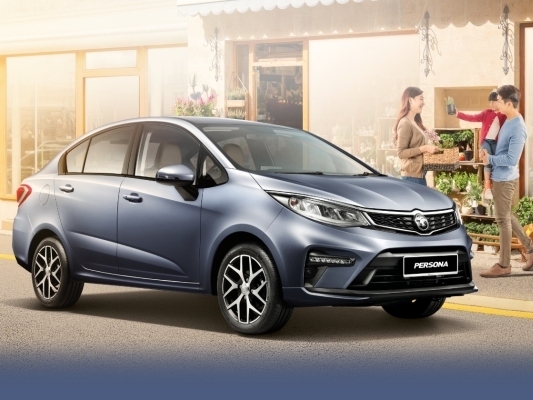
Proton Persona Interior Design Revealed: A High-Value B-Segment Sedan Interior Analysis
MichaelJul 21, 2025
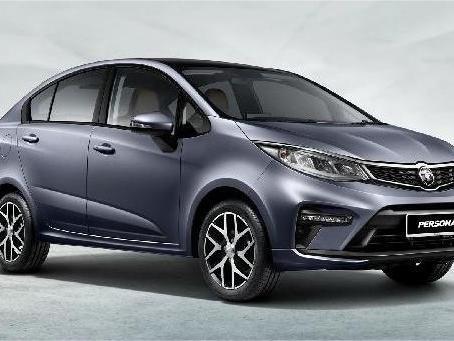
Proton Persona Review: Fuel-Efficient, Spacious City Sedan
JamesApr 8, 2025
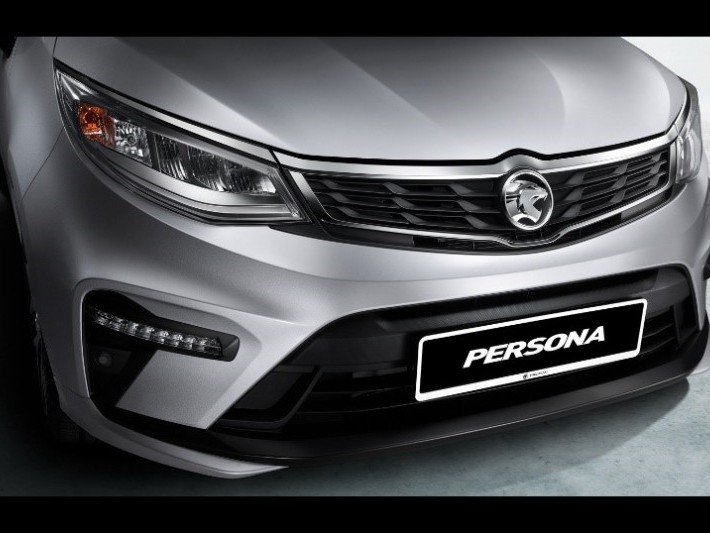
Considering buying a Proton Persona? Don't miss this fuel consumption guide!
LienOct 17, 2024
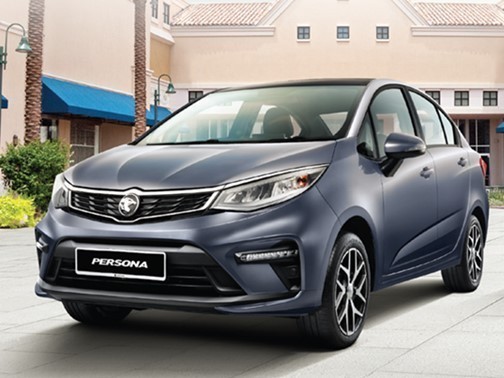
Proton Persona Buying Guide: Price, Configuration, How to Choose Between mid and high end models?
JamesOct 16, 2024
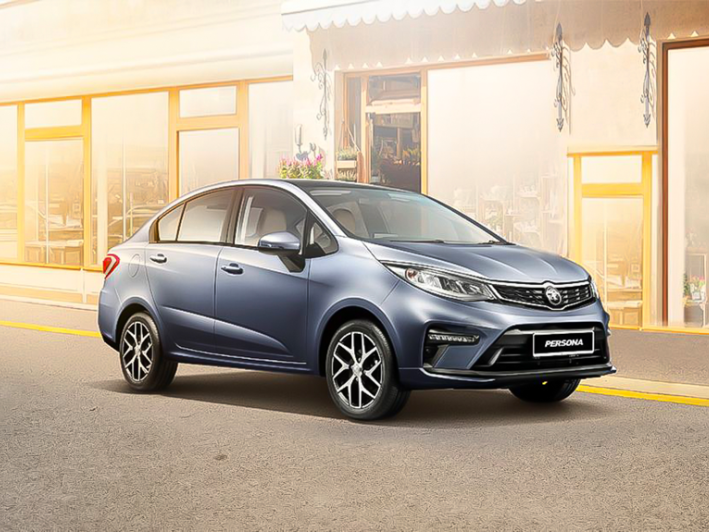
The 2022 Proton Persona is priced from RM 47,800, with a CVT gearbox standard across the range
LienJun 17, 2024
View More












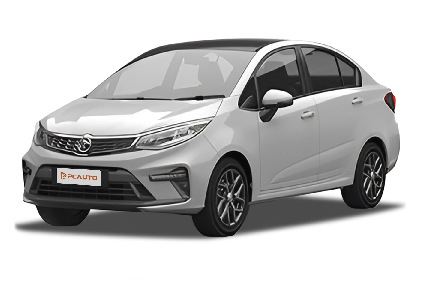





Pros
Cons